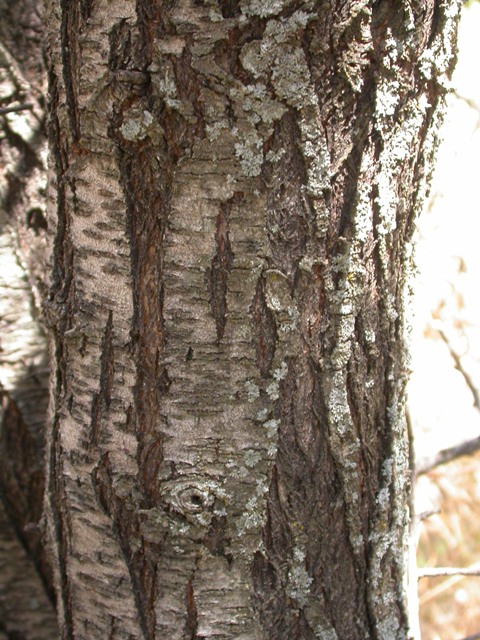Prunus dulcis (Almond)
"The coming of spring in Lebanon is announced by white and pink Almond tree blossoms appearing everywhere in early March through April from the coast up to an altitude of 1800 meters. The Almond is cultivated in orchards, but trees can also be found growing in the wild, in forests and woodlands, in abandoned orchards, in open shrub lands, between rocks, and on dry limestone slopes. The trees that grow in the wild produce bitter or semi-sweet almond seeds. Their bitterness comes from a compound that turns into the poison cyanide when it comes into contact with water.This economically important tree has a spreading crown and can grow up to eight meters high. Its leaves are elongated, toothed, and egg-shaped, and they grow in clusters from short stubs on the branches." *
* Trees of Lebanon, 2014, Salma Nashabe Talhouk, Mariana M. Yazbek, Khaled Sleem, Arbi J. Sarkissian, Mohammad S. Al-Zein, and Sakra Abo Eid
- Landscape Information
- Botanical Description
- Horticulture Management
-
By H. Zell (Own work) [GFDL (http://www.gnu.org/copyleft/fdl.html) or CC BY-SA 3.0 (http://creativecommons.org/licenses/by-sa/3.0)], via Wikimedia Commons
-
by Ester Inbar, available from http://commons.wikimedia.org/wiki/User:ST. [Attribution], via Wikimedia Commons
-
fir0002 | flagstaffotos.com.au [GFDL 1.2 (http://www.gnu.org/licenses/old-licenses/fdl-1.2.html)], via Wikimedia Commons
-
-
-
Nehrams2020 [GFDL (http://www.gnu.org/copyleft/fdl.html) or CC BY-SA 3.0 (http://creativecommons.org/licenses/by-sa/3.0)], via Wikimedia Commons
Search plant on Google
Download as PDF
-
Arabic Name: شجرة اللوز
Pronunciation: PROO-nus DUL-sis
-
Plant type: Tree
-
Origin: Mediterranean
-
Heat Zones: 1 to 10
Hardiness Zones: 7 to 10
-
Uses: Specimen, Edible, Cut Flowers / Arrangements, Native to Lebanon
-
Size/Shape
Growth Rate: Moderate
Tree Shape: Vase
Canopy Symmetry: Symmetrical
Canopy Density: Open
Canopy Texture: Fine
Height at Maturity: 5 to 8 m
Spread at Maturity: 5 to 8 meters
Time to Ultimate Height: 10 to 20 Years
-
By H. Zell (Own work) [GFDL (http://www.gnu.org/copyleft/fdl.html) or CC BY-SA 3.0 (http://creativecommons.org/licenses/by-sa/3.0)], via Wikimedia Commons
-
by Ester Inbar, available from http://commons.wikimedia.org/wiki/User:ST. [Attribution], via Wikimedia Commons
-
fir0002 | flagstaffotos.com.au [GFDL 1.2 (http://www.gnu.org/licenses/old-licenses/fdl-1.2.html)], via Wikimedia Commons
-
-
-
Nehrams2020 [GFDL (http://www.gnu.org/copyleft/fdl.html) or CC BY-SA 3.0 (http://creativecommons.org/licenses/by-sa/3.0)], via Wikimedia Commons
Search plant on Google
Download as PDF
-
Foliage
Leaf Arrangement : Alternate
Leaf Venation: Pinnate
Leaf Persistance: Deciduous
Leaf Type: Simple
Leaf Blade: 5 - 10 cm
Leaf Shape: Oblanceolate
Leaf Margins: Serrulate
Leaf Texture: Fine
Leaf Scent: No Fragance
Color(growing season): Green
Color(changing season): Yellow, Brown
-
Flower
Flower Size Range: 1.5 - 3
Flower Sexuality: Monoecious (Bisexual)
Flower Scent: Pleasant (Sweet)
Flower Color: White, Pink
Seasons: Spring
-
Trunk
Trunk Susceptibility to Breakage: Suspected to breakage
Number of Trunks: Multi-Trunked
Trunk esthetic Values: Not Showy
-
Fruit
Fruit Type: Nut
Fruit Showiness: Yes
Fruit Size Range: 3 - 7
Fruit Color: Green
Seasons: Spring
-
By H. Zell (Own work) [GFDL (http://www.gnu.org/copyleft/fdl.html) or CC BY-SA 3.0 (http://creativecommons.org/licenses/by-sa/3.0)], via Wikimedia Commons
-
by Ester Inbar, available from http://commons.wikimedia.org/wiki/User:ST. [Attribution], via Wikimedia Commons
-
fir0002 | flagstaffotos.com.au [GFDL 1.2 (http://www.gnu.org/licenses/old-licenses/fdl-1.2.html)], via Wikimedia Commons
-
-
-
Nehrams2020 [GFDL (http://www.gnu.org/copyleft/fdl.html) or CC BY-SA 3.0 (http://creativecommons.org/licenses/by-sa/3.0)], via Wikimedia Commons
Search plant on Google
Download as PDF
-
Tolerance
Frost Tolerant: Yes
Heat Tolerance: Yes
Salt Tolerance: Moderate
-
Requirements
Soil Requirements: Clay, Sand
Soil Ph Requirements: Acidic, Neutral
Water Requirements: Moderate, Low
Light Requirements: Full
-
Management
Toxicity: No
Pruning Requirements: Needed, to develop a strong structure
Fruit/ Leaves/ Flowers litter: No
Life Span: 25-50 years
Edible Parts: Fruit
Plant Propagation: Seed, Grafting


